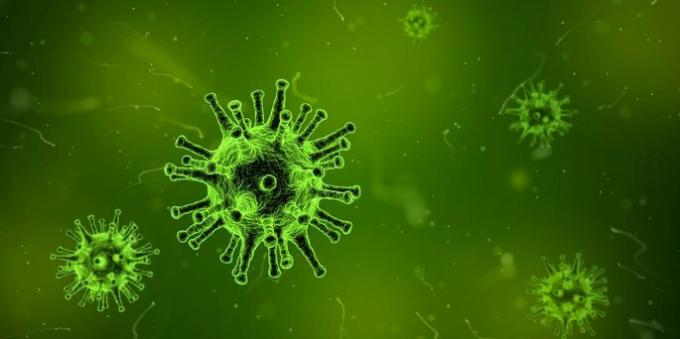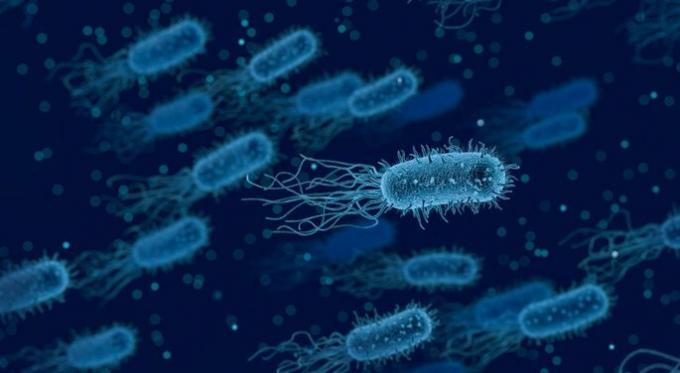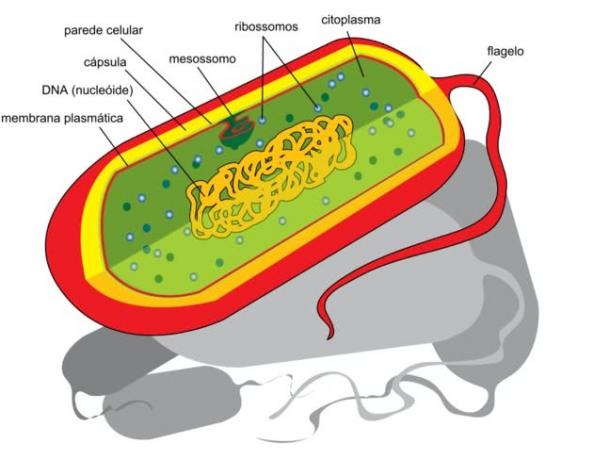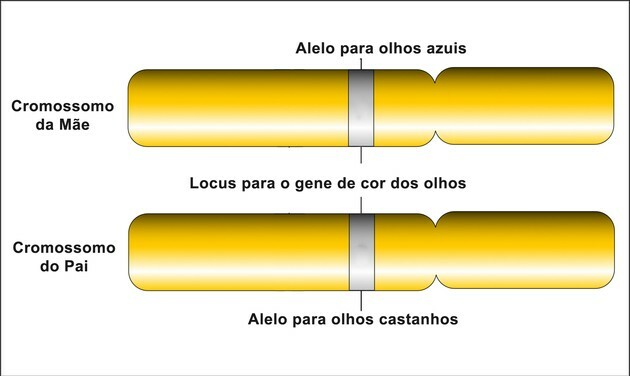Viruses are currently the only acellular beings on Earth. That is, they do not form a cell, carrying only strands of DNA and/or RNA.
Bacteria are unicellular beings, lacking a nucleus, being slightly larger than viruses. They can live without air (anaerobic) or with air (aerobic).
Fungi, on the other hand, can be unicellular or multicellular, microscopic like those that form mold or quite large like some types of mushrooms and wood ears. For a long time they were identified as vegetables, but in the last century, they became part of a new kingdom of living beings, the Fungi Kingdom.
| Virus | Bacteria | fungi | |
|---|---|---|---|
| Characteristics | They do not constitute a complete cell, so they need a cell from another organism to host them. | Unicellular microorganisms belonging to Kingdom Monera. They can be autotrophic or heterotrophic, anaerobic or aerobic. | They have their own kingdom (Fungi), perform different functions in nature (decomposers, predators, parasites, etc.). |
| number of cells |
|
|
|
| Structure |
|
|
|
| Related diseases |
|
|
|
Both microorganisms can be studied by microbiology. A good part of these studies are based on interaction with human beings, based on their relationship with diseases or benefits that they may bring to human life.
What are viruses?
Viruses are extremely small and acellular, meaning they don't have any cells. They need other cells to replicate their genetic material because they don't have their own metabolism. Many consider them apart from living beings, treating them like infectious particles.

To multiply, viruses need other cells, which are called “hosts”. In this sense, viruses are “intracellular parasites”. Because they undergo genetic mutations and multiply, others consider them part of living beings. Therefore, there is still much discussion in the scientific community about these microscopic beings.
Structure
The structure of viruses is extremely simple: they are formed by the capsid, which is a protein membrane.
Within this layer, there are nucleic acids, which give rise to the genetic material of viruses. These acids can be ribonucleic (RNA) or deoxyribonucleic (DNA).
In order for them to multiply, the virus invades a healthy cell and takes control of its functioning. As the cell ceases to perform its functions, the virus begins to replicate its genetic material. Then there is the release of new viruses in the infected organism.
viral diseases
There are some diseases that are related to the performance of different types of viruses in the human body. Due to the resistance and adaptability of viruses, some viruses are quite difficult to combat.
Some examples of virus-borne illnesses:
- Measles - Measles morbillivirus
- Chickenpox (varicella) - Varicella-Zoster Virus (VZV)
- Mumps - Infectious Parotitis Virus
- Influenza - RNA, H1N1, influenza virus, etc.
- HIV/AIDS - Human Immunodeficiency Virus (HIV)
- Dengue, Zika and Chikungunya - Flaviviridae/Togaviridae (DEN, ZIKV, CHIKV)
What are bacteria?
Bacteria are unicellular and prokaryotic microscopic beings, that is, they do not have a defined nucleus. Because they are prokaryotic, bacteria do not have DNA organized into true chromosomes.
There are thousands of species of bacteria, many of which can cause disease. However, there are also beneficial bacteria, such as those that live in the human intestines and help to break down what is ingested in food.

Bacteria belong to Kingdom Monera, which is one of the kingdoms of living beings on planet Earth. The beings in this kingdom are unicellular, prokaryotes (without a defined nucleus in the cell), autotrophs (produce own energy) or heterotrophs (which collect the necessary energy by feeding on other organisms).
Bacteria live in the most diverse environments, whether in the air, in the water, inside other living beings and some have already survived the vacuum and radiation of space.
Structure
Bacteria have a rigid outer structure called the bacterial wall or skeletal membrane. This membrane prevents the entry of water, preventing the bacteria from "drowning".
There are several shapes that characterize bacteria: spheres, spirals, rods, etc. It is also common for bacterial cells to have flagella, which act as tentacles for locomotion and fixation of the bacteria.
Because they are prokaryotic, the genetic material (DNA) is dispersed inside forming a circular chain called a nucleoid.
A characteristic of the cell structure of bacteria is the formation of plasmids, which are nucleoid-like molecules that act in cell defense.
bacterial diseases
Some diseases are caused by bacteria (bacteriosis) are very simple and common, such as tonsillitis, others are very dangerous and require intense care.
Some examples of bacterial diseases:
- Bacterial meningitis - meningococci, pneumococci and Haemophylus.
- Cholera -Vibrio cholerae
- Tuberculosis - Mycobacterium tuberculosis
- Leptospirosis - Leptospira
- Leprosy - mycobacterium leprae
- Gonorrhea - Neisseria gonorrhea
What are fungi?
Fungi are unicellular or multicellular, microscopic or macroscopic. Biologists have already cataloged around one hundred thousand species of fungi, but it is estimated that there are more than one and a half million species.
Due to their specific characteristics, fungi cannot be classified as animals or plants and have their own kingdom, the Fungi kingdom.

The best known fungi are mushrooms, yeasts and molds. Despite their strange appearance, fungi are extremely important for the ecosystem. They are responsible for much of the decomposition of organisms and maintenance of the energy cycle.
In addition, fungi are widely used by the food industry. In general, foods that go through a fermentation process suffer the action of yeast. Like breads, cakes, beers, wines, etc.
Structure
Fungi can be unicellular or multicellular, however, their cells have common characteristics. They develop from the hypha, a cylindrical and filamentous structure. Hyphae can branch and extend.
These hyphae may show the formation of a perpendicular cell wall called a septum.
fungal diseases
Some diseases can be caused by the performance of some types of fungi in the body. They are usually less risky and easier to treat than bacterial and viral diseases.
Some examples of fungal diseases:
- Candidiasis - candidate
- White cloth (ptyriasis versicolor) - Malassezia furfur
- Histoplasmosis - Histoplasma capsulatum
See also the differences between:
- DNA and RNA
- Prokaryotic and Eukaryotic Cells
- animal and plant cell



